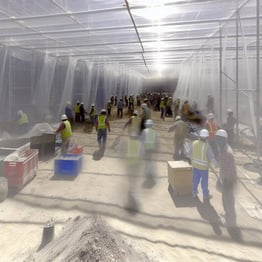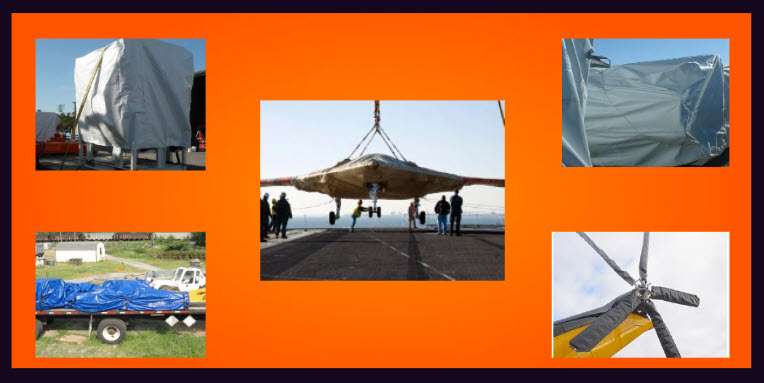Greenhouse Film Showdown: Tufflite vs. Luminance vs. TX-1200
Choosing the right greenhouse film can significantly impact your harvest and profitability. Let's delve deeper into the features, benefits, and drawbacks of three popular options: Tufflite 1 Year Clear, Luminance Tunnel Film, and TX-1200, to help you select the champion for your specific needs.
Tufflite 1 Year Clear: The Budget-Conscious Choice for Short-Term Use
- Focus: Affordability and basic protection for short-term greenhouse projects (typically one growing season or less).
- Benefits:
- Cost-Effective: The most economical option on this list, making it ideal for new growers or temporary greenhouse setups.
- Durable and Dependable: This 6-mil film offers protection from harsh weather conditions like rain, wind, and moderate sunlight.
- Extended Growing Season: Shields crops from the elements, allowing you to potentially extend your growing season and increase profitability.
- Reduced Disease & Pest Risks: The anti-dust additive helps keep the film clean, minimizing the need for harsh pesticides and fungicides.
- Reduced Harvest Delays: Protects crops from rain, allowing for a more consistent harvest schedule.
- Drawbacks:
- Limited Lifespan: With one year of UV protection, this film might not be suitable for long-term use.
- Basic Features: Lacks advanced features like infrared heat retention or anti-condensate properties.
Luminance Tunnel Film: Cooler Temps, Earlier Harvests, and Healthier Plants
- Focus: Innovation focused on cooler greenhouse temperatures and improved plant health.
- Benefits:
- Temperature Regulation: This 6-mil film boasts a unique technology that lowers greenhouse temperatures by up to 9°F compared to standard films. This translates to:
- Reduced Stress on Plants: Cooler temperatures prevent heat stress and promote stronger, healthier plant growth.
- Lower Watering Needs: Cooler temperatures reduce evaporation, minimizing the frequency of watering required.
- Enhanced Plant Health: Cooler temperatures and reduced moisture can inhibit fungus spore development, leading to healthier plants with stronger root systems.
- Insect Control: Lower temperatures and reduced humidity can also hinder insect propagation, potentially reducing pest problems in your greenhouse.
- Earlier Harvests: Cooler temperatures can lead to faster plant development, potentially resulting in earlier harvests (up to three weeks earlier in some cases).
- Improved Working Conditions: Cooler temperatures during harvest season create a more comfortable working environment.
- Extended Growing Season: Improved temperature regulation can potentially extend the growing season in warmer climates.
- Temperature Regulation: This 6-mil film boasts a unique technology that lowers greenhouse temperatures by up to 9°F compared to standard films. This translates to:
- Drawbacks:
- Limited Information: Specific details about UV protection and potential lifespan are not readily available.
- Cost Comparison: While pricing might be comparable to Tufflite, it's important to factor in the potential cost savings from reduced watering and pest control needs.
TX-1200: High-Performance Champion for Long-Term Use
- Focus: Durability, weatherproofing, and long-lasting performance with maximum customization options.
- Benefits:
- Unmatched Durability: Made from high-quality polyethylene laminate, TX-1200 boasts exceptional tear resistance, strength, and resistance to the elements.
- Weather Protection: UV stabilization shields the film from degradation caused by sunlight exposure. Cold-crack resistance ensures the film doesn't fail in extreme cold temperatures. The low permeability design minimizes moisture transmission, further enhancing weatherproofing.
- Long Lifespan: The durable construction and UV protection translate to a significantly longer lifespan compared to other options on this list. This translates to cost savings through fewer replacements and the potential for reuse.
- Puncture & Tear Resistance: Multiple layers and cord reinforcement create a robust film that can withstand harsh conditions and accidental punctures.
- Customizable Solutions: Available in various colors (black, white, clear, black/white) and custom sizes up to 200' x 300', TX-1200 offers unmatched customization options to perfectly fit your greenhouse setup and light management needs. Additionally, grommets, pipe loops, and other fabrication options are available for a tailored solution.
- Usable Temperature Range: The wide usable temperature range (-45°F to 170°F) makes TX-1200 suitable for various climates and applications.
Need to Compare 10 Films?
Still unsure? Explore our comprehensive guide featuring 10 different greenhouse films, each with its unique features and benefits. Find your perfect match for a successful and profitable growing season


















